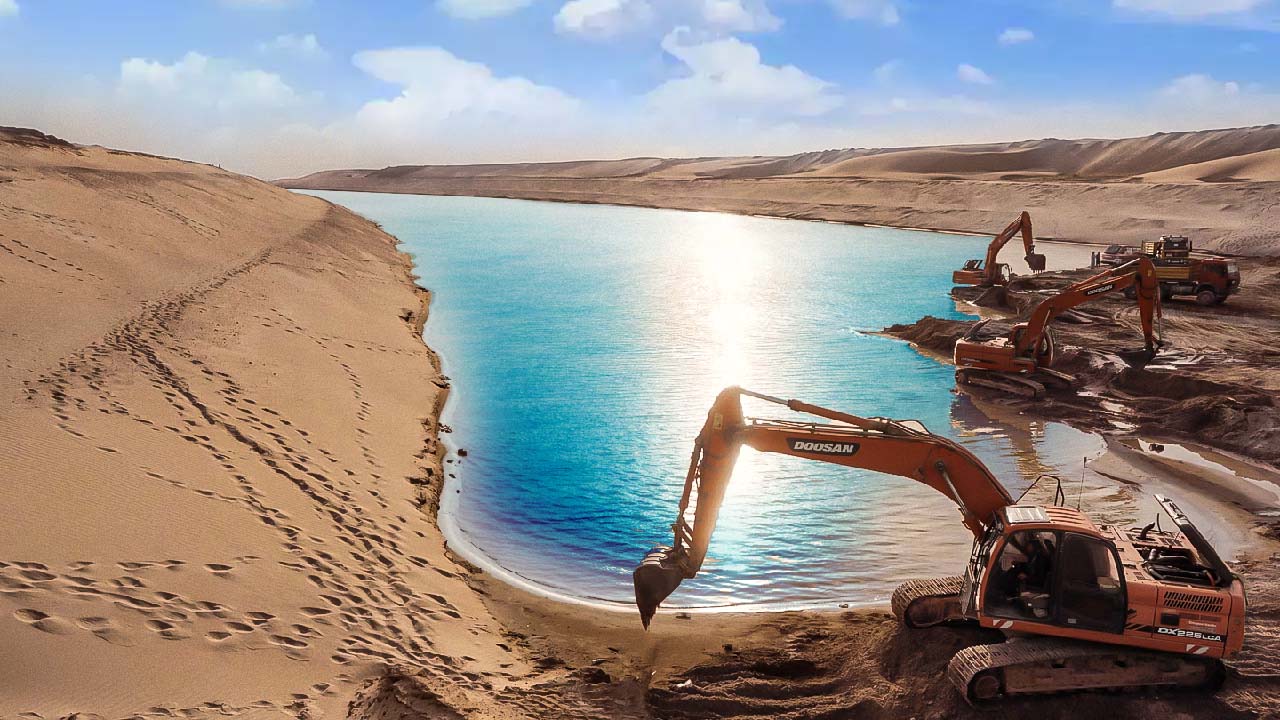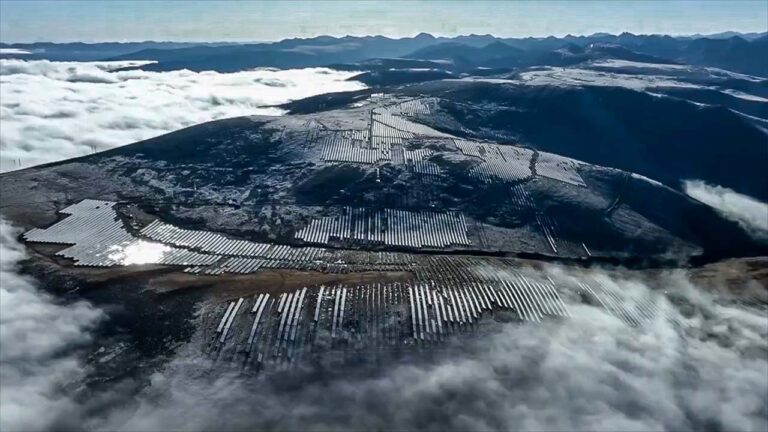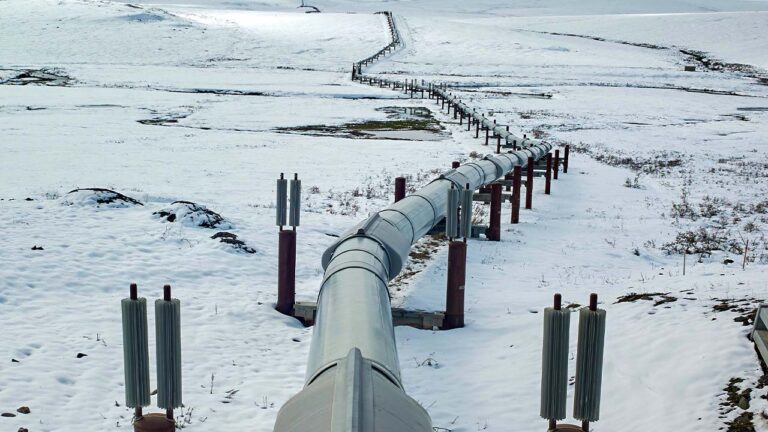Afghanistan is Building Qosh Tepa Canal the Largest Manmade River in the Desert
Two years after the Taliban took control of Afghanistan, they are overseeing their first major project – the Qosh Tepa canal. But why build Asia’s Largest Artificial River in The Desert?
The answer is that it will direct about 25% of the Amu Darya water into Afghanistan and is expected to irrigate 550,000 hectares of land in three provinces: Balkh, Jawzjan, and Faryab. This will boost the country’s agriculture sector, moving Afghanistan closer to agricultural self-sufficiency.
Thousands of workers are involved in different shifts, and the completion of the first phase of the Qosh Tepa Canal has already been announced by the officials in Afghanistan.
The Amu Darya, also known as the Amu River, is one of Afghanistan’s major rivers, located in the northern region. It forms Afghanistan’s border with three Central Asian countries: Turkmenistan, Uzbekistan, and Tajikistan. Originating from Pamir, which is situated in Afghanistan, it flows for a distance of 2540 kilometers before reaching the Aral Sea. It plays a crucial role in ensuring agricultural prosperity in the area. This is particularly significant for four Central Asian countries: Tajikistan, Kyrgyzstan, Uzbekistan, and Turkmenistan, which rely on more than 80% of its water.
However, Afghanistan, the country where the Amu River originates, has never effectively and modernly harnessed its water resources. Recognizing this, the construction of the Qosh Tepa canal in the Amu Darya basin, originally planned during the time of Sardar Mohammad Dawood Khan, the late president of Afghanistan, offers an opportunity for Afghanistan to utilize its water resources in a more advanced and mechanized manner to promote agricultural prosperity.
Also Read: Merdeka 118 World’s Second Tallest Skyscraper Ready to Open
The feasibility study of the Qosh Tepa canal was completed in 2018 during the presidency of Ashraf Ghani. According to plan, the canal begins in the Kaldar district of Balkh province and ends in the Andkhoy district of Faryab province. After the political changes in August 2021, the new Afghan government announced the start of canal construction in March 2022. The canal will be 285 kilometers long and 100 meters wide, making it one of Afghanistan’s most important development projects. It’s expected to be finished by 2028.
This canal project is more than just irrigation; for the new Taliban’s government, it’s a test of their ability to govern.
This canal will bring about 25% of the Amu Darya river’s water into Afghanistan and provide irrigation for 550,000 hectares of land in three Afghan provinces. Currently, around 4,000 workers tirelessly operate excavators and heavy-duty trucks day and night, working to carve a massive ditch that’s 100 meters wide – wider than the California Aqueduct.
This canal is a ray of hope for the people of Afghanistan especially for the villages in Jowzjan province. The people here are grappling with worsening food shortages, four decades of relentless war, three consecutive seasons of severe drought, and a changing climate that has disrupted rainfall patterns. The average temperature in Afghanistan has risen by 1.8 degrees Celsius in the past 70 years, double the global average.
Once the canal is completed, it has the potential to irrigate 550,000 hectares of desert, effectively increasing Afghanistan’s arable land by a third. This could make Afghanistan self-sufficient in food production for the first time since the 1980s.
This massive development project, estimated to cost 60 billion Afghan afghanis (equivalent to approximately 700 million USD), holds great significance for Afghanistan in terms of its economy, social well-being, and security stability. It will positively affect the lives of 60,000 households across three provinces: Balkh, Jawzjan, and Faryab. It will achieve this by generating employment opportunities in the agriculture sector, moving Afghanistan closer to agricultural self-sufficiency.
Moreover, this project will contribute to enhancing security stability in Afghanistan. Many of its beneficiaries are vulnerable farmers who can be severely affected by seasonal shocks that reduce their income. In such situations, they might turn to illegal activities as an alternative source of income. However, this project not only safeguards beneficiaries from the devastating effects of seasonal shocks but also creates new employment opportunities for a larger number of households.
Also Read: Turkey is Building Yusufeli Dam One of the Highest Dams in the World
On the other hand, the initiation of canal construction on the Amu River has raised concerns among Afghanistan’s Central Asian neighbors, particularly Uzbekistan and Turkmenistan.The canal will divert approximately 25% of the water from the Amu Darya River into Afghanistan. Uzbekistan’s agriculture sector, particularly its cotton fields, which provide significant employment, heavily relies on this water source. In response to this issue, a high-level delegation from Uzbekistan, led by Abdulaziz Kamilov, recently visited Afghanistan and met with Afghan officials. Although the details of the canal-related discussions from the meeting haven’t been made public, experts believe that water management was likely a key topic of discussion.
This canal aims to divert a massive 10 billion cubic meters of water from the Amu Darya river each year. As more than 100 kilometers of this 285 km-long canal has already been dug, the potential impact of this project is growing more evident with each passing day.
The Taliban is putting substantial resources into this project, involving over 4,000 workers and numerous machines. They seem determined to complete the canal, regardless of the consequences it might have for the downstream states like Uzbekistan and Turkmenistan. However, it’s essential to protect existing water distribution agreements in the region. Disagreements could lead to a diplomatic crisis, further isolating the Taliban and worsening security concerns in the area. That’s why the Uzbek delegation emphasized the need to develop the canal while respecting existing legal norms. Yet, integrating such a massive project into the current legal framework raises many questions.
Historically, agreements concerning the Amu Darya were made between the Soviet Union and the Afghan government, going back to 1946. These agreements, however, did not directly address water-sharing on the Amu Darya. Later agreements, like the post-Soviet Almaty Agreement, did not include Afghanistan as a signatory. This gave significant leeway to the Central Asian states to develop the water resources in the basin. It led to the construction of the massive Karakum canal, which provides most of Turkmenistan’s water. It also intensified irrigation projects near the river’s mouth, reducing the water flowing into the Aral Sea.
Currently, the Almaty Agreement, based on Soviet-era Protocol 566, governs the basin, assuming that Afghanistan would divert 2.1 billion cubic meters of water, far less than the potential 10 billion the Qosh Tepa canal might take.
The Qosh Tepa canal project, which aims to divert water from the Amu Darya, is facing significant challenges and potential consequences. Uzbekistan is concerned about the impact on its cotton industry and the aridification of the Aral Sea, leading to health and environmental problems. Turkmenistan also relies heavily on the Amu Darya and is dealing with water shortages. The region’s governments have been cooperating with the Taliban for counterterrorism efforts, but the canal’s construction could disrupt this cooperation. Additionally, the canal’s development could lead to settlement by Taliban-affiliated groups, potentially increasing instability in the region closest to Central Asian nations’ borders.
The Qosh Tepa canal issue puts Central Asian nations in the Amu Darya basin in a difficult position. They must choose between potential regional instability and internal instability. They need to weigh the benefits of having a content and stable Taliban in northern Afghanistan against the costs their own populations might bear if the Amu Darya’s water resources are further strained. While Uzbekistan’s current stance and Turkmenistan’s lack of a clear position might suggest different priorities—internal stability versus regional harmony—the rapid progress of the project might mean that Tashkent and Ashgabat haven’t had time to fully calibrate their diplomatic responses.






